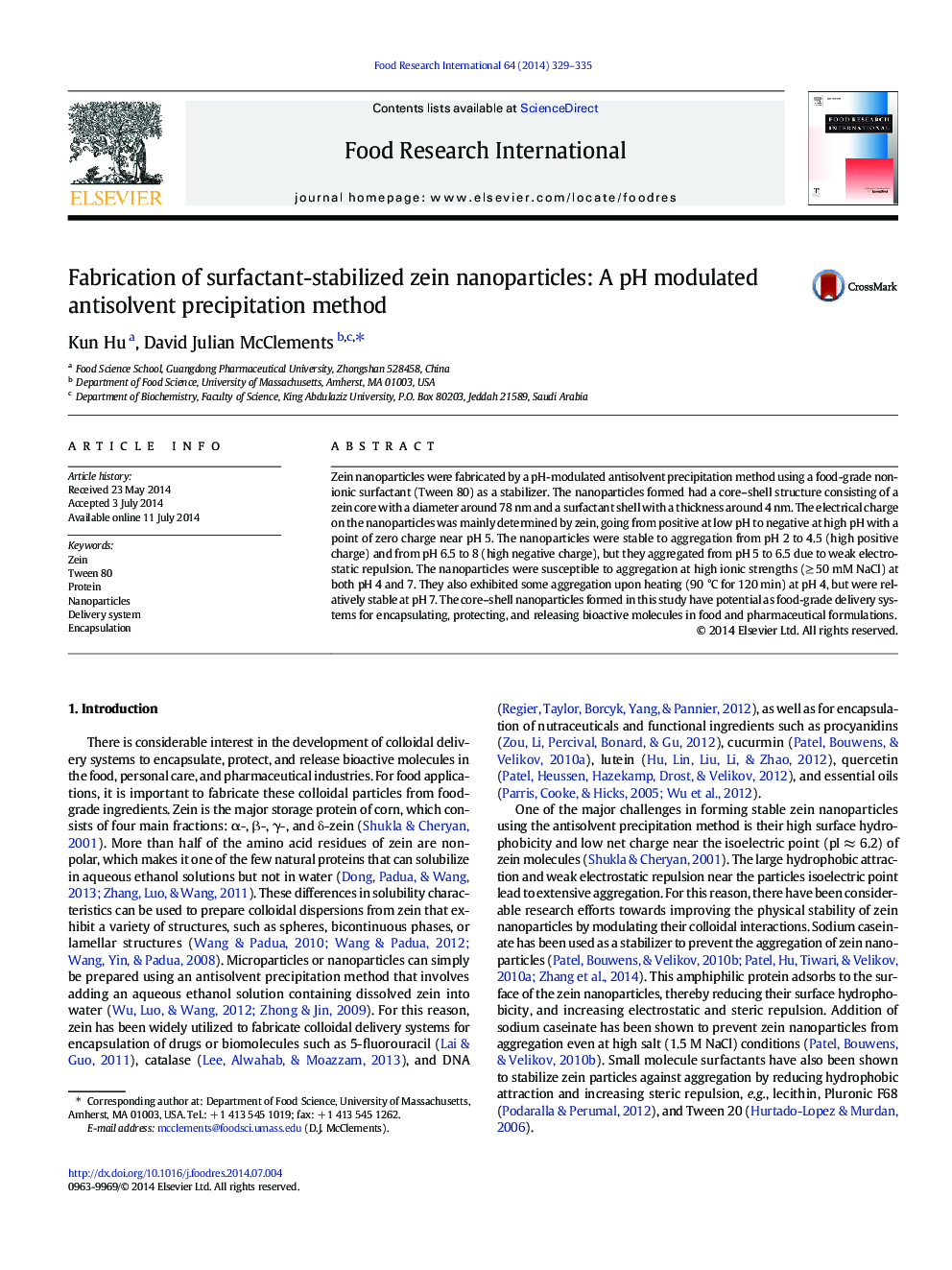| کد مقاله | کد نشریه | سال انتشار | مقاله انگلیسی | نسخه تمام متن |
|---|---|---|---|---|
| 6396623 | 1628481 | 2014 | 7 صفحه PDF | دانلود رایگان |

- Protein-nanoparticles were fabricated from zein using antisolvent precipitation.
- pH control during the preparation procedure is important for stable systems.
- The influence of environmental stresses on their charge and stability was measured.
- Particle size and polydispersity could be controlled by thermal processing.
Zein nanoparticles were fabricated by a pH-modulated antisolvent precipitation method using a food-grade non-ionic surfactant (Tween 80) as a stabilizer. The nanoparticles formed had a core-shell structure consisting of a zein core with a diameter around 78 nm and a surfactant shell with a thickness around 4 nm. The electrical charge on the nanoparticles was mainly determined by zein, going from positive at low pH to negative at high pH with a point of zero charge near pH 5. The nanoparticles were stable to aggregation from pH 2 to 4.5 (high positive charge) and from pH 6.5 to 8 (high negative charge), but they aggregated from pH 5 to 6.5 due to weak electrostatic repulsion. The nanoparticles were susceptible to aggregation at high ionic strengths (â¥Â 50 mM NaCl) at both pH 4 and 7. They also exhibited some aggregation upon heating (90 °C for 120 min) at pH 4, but were relatively stable at pH 7. The core-shell nanoparticles formed in this study have potential as food-grade delivery systems for encapsulating, protecting, and releasing bioactive molecules in food and pharmaceutical formulations.
Journal: Food Research International - Volume 64, October 2014, Pages 329-335